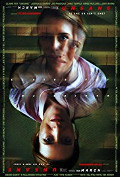
Directed by
Steven Soderbergh
98 minutes
Rated MA
Reviewed by
Bernard Hemingway

Unsane
Synopsis: A young woman, Sawyer Valentini (Claire Foy), finds herself involuntarily committed to a mental institution where she is confronted by her greatest fear. But is it real or just her imagination?
The first three quarters of Unsane are brilliant. Then it shifts from the psychological to the physical, from being a beguiling questioning of its protagonist’s sanity to being a run-through of familiar horror-thriller tropes. In the hands of a lesser director this shift could have been the film’s undoing but Soderbergh gets it to work by reining in the grisliness and moving efficiently through the plot points. Even so, one can’t help but wish that he had maintained the tone of see-sawing ambivalence that makes the bulk of the film so compelling.
As we all know, Soderbergh shuffles from big budget crowd-pleasers like the Oceans films and smaller, more adventurous projects like The Girlfriend Experience (2009). Unsane belongs squarely at the latter end of the spectrum.
Shot entirely with iPhone 7 Plus cameras by Soderbergh (as Peter Andrews) and edited by the director (as Mary Ann Bernard) and with no big name actors (with the exception of an amusing cameo by Matt Damon), Unsane draws us into a Kafka-esque nightmare after Sawyer carelessly signs some forms at a psychiatric hospital where she has gone to seek counselling for hallucinations she has been experiencing as the result of a stalker incident. She finds herself voluntarily incarcerated for 24 hours then involuntarily so for seven days. This part of the film, convincingly scripted by writers Jonathan Bernstein and James Greer, and appropriately served by Soderbergh's gritty, slightly skewed iPhone cinematography, harrowingly portrays the completely believable stand-off between Sawyer’s distressed point of view and that of the institution with its vested interest in pathologising patient behaviour. Caught in a kind of Catch-22 loop, the more Sawyer tries to leave the hospital the more the staff feel justified in keeping her there. Added to this we are never sure to what extent Sawyer is actually suffering from delusions.
At a certain point however, our questions are answered but this is also the point at which the film shifts from the tentative to the literal, moving it slap-bang into the territory of the generic Hollywood horror-thriller with its cat-and-mouse scares, graphic violence and, moreover, does so based on a very dubious plot contrivance. Why so? We hardly are suffering from a shortage of such fare. With a reference late in the film to a “cabin in the woods” there seems to be some perverse humour intended here but instead it all feels like a miscalculation, as if Soderbergh the gun-for-hire had taken over from Soderbergh the auteur.
One of the most interesting aspects of the film is the portrayal of the main character. Sawyer is no typical female victim but rather is an emotionally cold, defensive young woman who finds more satisfaction in her job as a data analyst than in personal relationships, something which, the film suggests, stems from her repressively controlling mother (Amy Irving). Onscreen for most of the film, Claire Foy gives us a pivotal performance which is both appealingly fragile and unapologetically tough, her Sawyer being at once coolly rational and possibly bat crazy. It's one of the many strengths of a film which if wasn't marred by an inexplicably ill-judged shift to the genre familiar in its latter stages could have been one of Sodebergh's best.

Want more about this film?


Want something different?




